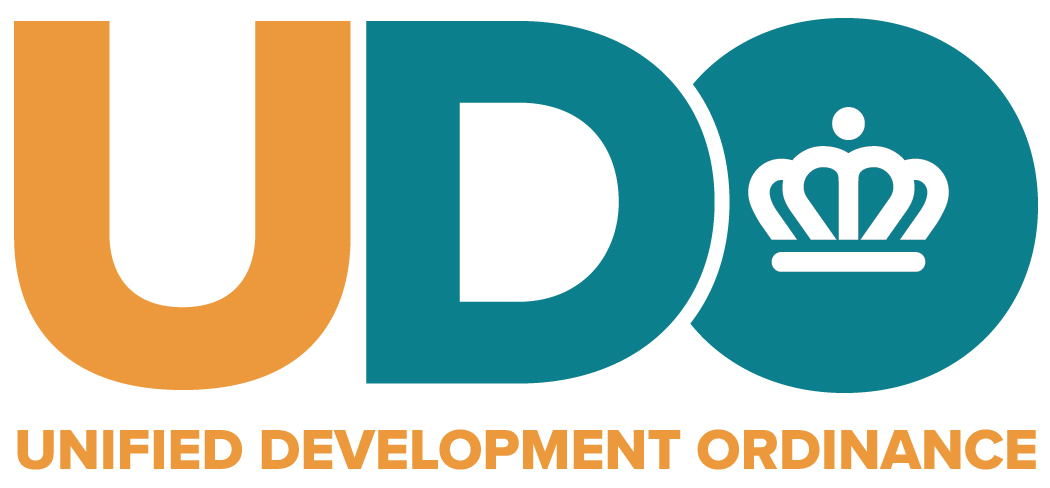Article 7. Campus Zoning Districts: IC-1, IC-2, OFC, OG, RC
In the event of differing language or numbering between the PDF and the web version of this text, the PDF version will control.
The text below and PDF above are reflective of the latest text amendments adopted by Charlotte City Council on Monday, June 16.
7.1 PURPOSE
- IC-1 Institutional Campus Zoning District
The IC-1 Institutional Campus Zoning District is intended to address the needs and impacts of large-scale institutional campuses, including governmental, educational, medical, social service, continuum of care residential developments, and religious campuses, which may include associated supportive uses primarily to provide for employees and visitors on-site, such as eating and drinking, retail, and personal service establishments. The IC-1 Zoning District is characterized by an open development form of predominantly low- to mid-rise structures and ample green space within a campus-like environment that prioritizes a cohesive pedestrian network. - IC-2 Institutional Campus Zoning District
The IC-2 Institutional Campus Zoning District is intended to address the needs and impacts of large-scale institutional campuses, including governmental, educational, medical, social service, continuum of care residential developments, and religious campuses, which may include associated supportive uses primarily to provide for employees and visitors on-site, such as eating and drinking, retail, and personal service establishments. The IC-2 Zoning District is characterized by a compact development form of taller structures within a densely developed, pedestrian-oriented urban environment. - OFC Office Flex Campus Zoning District
The OFC Office Flex Campus Zoning District is intended to address large-scale office, research, and medical campuses that may include some light industrial components, with supporting uses primarily designed to serve the everyday needs of employees and visitors, such as eating and drinking, retail, and personal service establishments. While OFC Zoning District developments are relatively low intensity, standards are included to foster internal and external walkability, providing connections both on-site and to the external pedestrian network. - OG General Office Zoning District
The OG General Office Zoning District is intended to accommodate areas of general office development that are predominantly supplemental to, or supportive of, institutional campuses as well as standalone office uses unrelated to institutions. The district is typically located at key nodes or along arterials within proximity of institutional campuses but may, in limited circumstances, be appropriate within a predominantly commercial context, especially in instances of standalone office uses. While OG Zoning District developments accommodate automobile access, standards are included to foster internal and external walkability, providing connections both on-site and to the external pedestrian network - RC Research Campus Zoning District
The RC Research Campus Zoning District is intended to address the needs and impacts of large-scale research campuses within a mixed-use environment, with supporting uses primarily designed to serve the everyday needs of employees, residents, and visitors, such as eating and drinking, retail, and personal service establishments. The RC Zoning District is characterized by a development form of taller structures within a pedestrian-oriented urban environment.
7.2 USES
Article 15 lists permitted, temporary, and accessory uses for the Campus Zoning Districts. Use definitions are found in Article 15. Prescribed conditions applicable to certain principal uses, temporary uses, and accessory uses are also found in Article 15.
7.3 DIMENSIONAL AND DESIGN STANDARDS
The tables below include the dimensional and design standards for the Campus Zoning Districts. Standards within the tables below may contain specific regulations organized by frontage type (Section 3.5). In the tables below, where a cell contains a standard or a “✔” the standard is applicable. Where a cell is blank and shaded, the standard does not apply.
- General
- Within the IC-1, IC-2, and RC Zoning Districts, the following shall apply to multi-family attached residential developments:
- If a minimum 25’ Class B landscape yard, measured from the future right-of-way line, abuts and runs parallel to an arterial street, the portion of the arterial street abutting this landscape yard shall not be considered a frontage for the standards of this article. The portion of the arterial street abutting this landscape yard shall still be considered a frontage for the standards of the remainder of this Ordinance. No parking lots shall be located between these landscape yards and permitted uses.
- For sites with three or more frontages, see Section 3.6 for alternative standards for ground floor activation, required prominent entrances, prominent entry design, and ground floor transparency.
- Within the IC-1, IC-2, and RC Zoning Districts, the following shall apply to multi-family attached residential developments:
- Lot
Lot standards govern the basic dimensions of lots, including but not limited to minimum area, width, and coverage as applicable. These standards are intended to provide a rational basis for the division, organization, and development of land within the City of Charlotte.
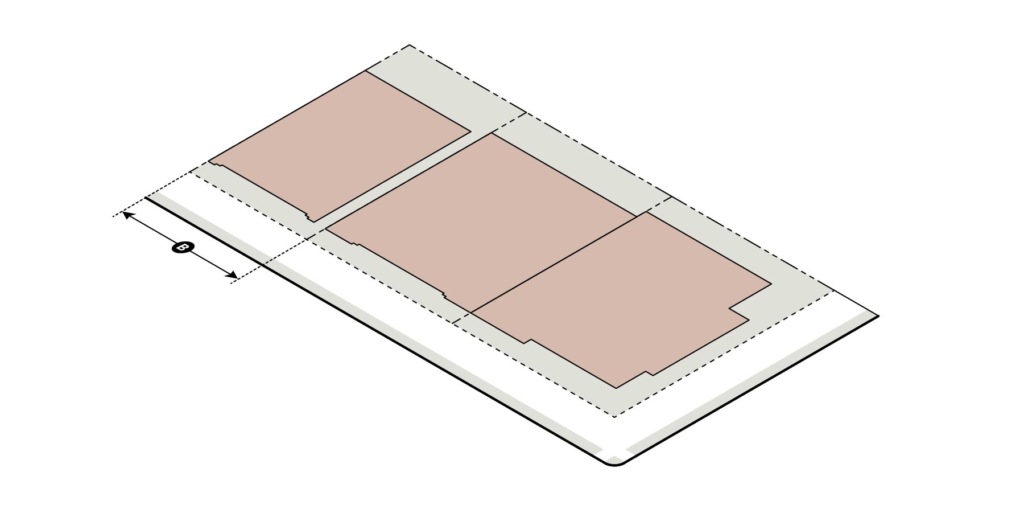
Table 7-1: Campus Zoning Districts Lot Standards 3
| IC-1 | IC-2 | OFC | OG | RC | ||
| A | Minimum District Size (acres) 1 | 10 | 5 | 10 | 5 | |
| B | Minimum Lot Width (feet) | 50 | 25 | 50 | 50 | 25 |
| C | Maximum Building Coverage (%) | 60 2 | 60 2 | |||
2 Structured parking up to 10% of lot area shall not count toward maximum building coverage. Any structured parking areas in excess of 10% of lot area shall be counted in maximum building coverage.
3 Lot Standards do not apply to individual sublots but do apply to the parcel on which the sublot(s) is located.
- Building Siting
Building siting standards govern the placement of buildings on lots and are intended to ensure that development maintains compatibility with its surrounding context and the intent of the applicable zoning district.
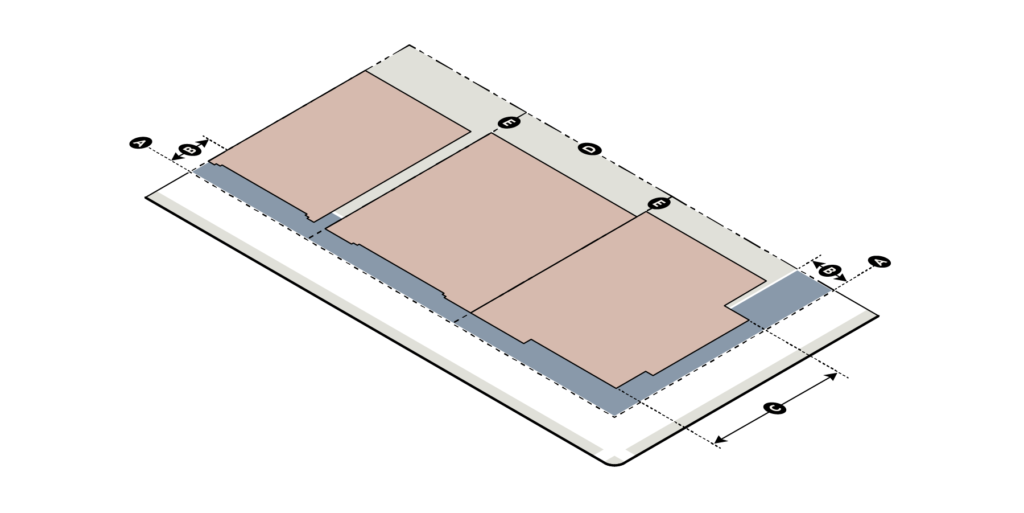
Table 7-2: Campus Zoning Districts Building Siting Standards
| IC-1 | IC-2 | OFC | OG | RC | ||
| A | Frontage Setback Line (from future back of curb) (feet) 1, 2, 6 | |||||
| Uptown Signature | 24 | 24 | 24 | 24 | 24 | |
| Main Street | 24 | 24 | 24 | 24 | 24 | |
| Linear Park | 36 | 36 | 36 | 36 | 36 | |
| 4-5 Lane Avenue/Boulevard | 36 | 20 | 36 | 36 | 20 | |
| 6 or more Lane Avenue/Boulevard | 40 | 24 | 40 | 40 | 24 | |
| 2-3 Lane Avenue | 36 | 20 | 36 | 36 | 20 | |
| Transit Station, Off-Street Public Path, Public Park 3 | 20 | 5 | 20 | 20 | 5 | |
| Uptown Primary | 20 | 20 | 20 | 20 | 20 | |
| Other – Primary | 36 | 20 | 36 | 36 | 20 | |
| Uptown Secondary | 16 | 16 | 16 | 16 | 16 | |
| Secondary | 36 | 16 | 36 | 36 | 16 | |
| Parkway (Measured from ROW) | 20 | 20 | 20 | 20 | 20 | |
| Limited Access (Measured from ROW) | 20 | 10 | 20 | 20 | 10 | |
| B | Frontage Build-To Zone (BTZ) (from frontage setback line) (feet) 4, 5 | |||||
| Main Street | 0-20 | 0-20 | 0-20 | 0-20 | 0-20 | |
| 4-5 Lane Avenue/Boulevard | 0-20 | 0-20 | ||||
| 6 or more Lane Avenue/Boulevard | 0-20 | 0-20 | ||||
| 2-3 Lane Avenue | 0-20 | 0-20 | ||||
| Transit Station, Off-Street Public Path, Public Park | 0-20 | 0-20 | ||||
| Other – Primary | 0-20 | 0-20 | ||||
| Secondary | 0-20 | 0-20 | ||||
| Parkway | ||||||
| Limited Access | ||||||
| C | Minimum BTZ Build-To Percentage for Structure (%) | |||||
| Main Street | 80 | 80 | 80 | 80 | 80 | |
| 4-5 Lane Avenue/Boulevard | 80 | 80 | ||||
| 6 or more Lane Avenue/Boulevard | 80 | 80 | ||||
| 2-3 Lane Avenue | 80 | 80 | ||||
| Transit Station, Off-Street Public Path, Public Park | 80 | 80 | ||||
| Other – Primary | 80 | 80 | ||||
| Secondary | 60 | 60 | ||||
| Parkway | ||||||
| Limited Access | ||||||
| D | Minimum Side Setback (feet) | |||||
| Not abutting Neighborhood 1 Place Type | 10 | 0 | 10 | 10 | 0 | |
| Abutting Neighborhood 1 Place Type | 10 | 10 | 10 | 10 | 10 | |
| E | Minimum Rear Setback (feet) | |||||
| Not abutting Neighborhood 1 Place Type | 20 | 0 | 20 | 20 | 0 | |
| Abutting Neighborhood 1 Place Type | 20 | 20 | 20 | 20 | 20 | |
2 In no case shall any building entry be located closer than six feet to an existing or proposed off-street public path or shared use path.
3 For the transit station, off-street public path, public park frontage, shall be measured from a property line or right-of-way line. If there is an easement in place for any frontage, then the measurement shall be taken from such easement. For any frontage abutting a reservation for a future frontage, the frontage setback line shall be measured from the edge of the reservation area.
4 When an existing Charlotte Water easement, other utility easement, or overhead utility clearance requirement conflicts with the build-to zone requirement, a build-to line shall be established at the edge of the easement or edge of the overhead utility clearance requirement closest to the build-to zone. A build-to zone shall not be required along frontages which abut a man-made or natural physical feature 35 feet in width or greater such as, but not limited to, a railroad line, rapid transit line, gas pipeline, SWIM buffer, or a buffer related to post-construction stormwater requirements. This does not include any stormwater control measure as required by this Ordinance.
5 Where a lot has more than two frontages that require a build-to zone, the build-to zone shall be increased by 100% for those frontages that exceed two. Such an increase should be applied to those frontages that are lowest in the established hierarchy of frontages (Section 3.5.D).
6 In the IC-1, OFC, or OG Zoning Districts, if no parking or maneuvering is located between a building and the frontage, then the frontage setback line may be reduced to match the standard required for the CAC-1 Zoning District.
- Building Height
Building height standards govern the minimum and maximum heights of buildings as applicable, and are intended to provide flexibility while maintaining appropriate transitions to adjacent areas.
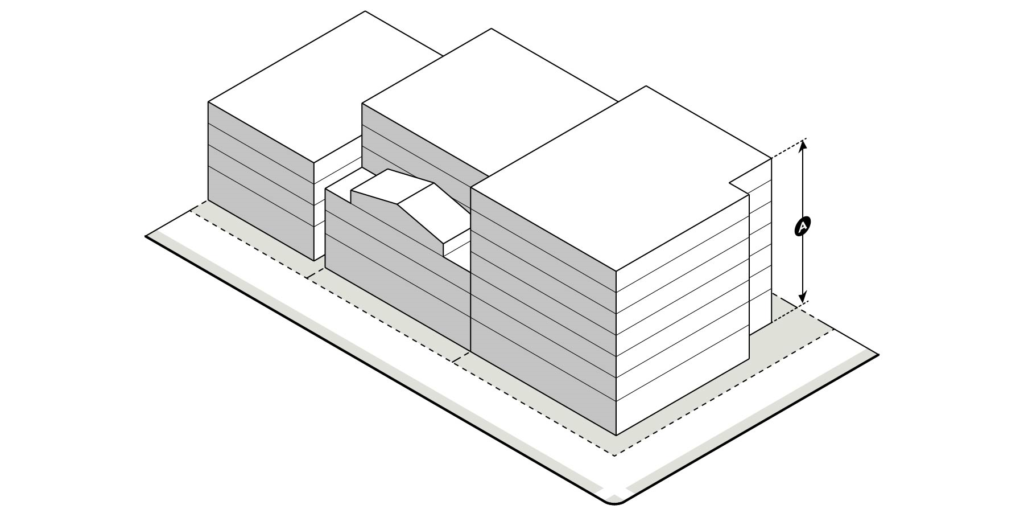
Table 7-3: Campus Zoning Districts Building Height Standards
| IC-1 | IC-2 | OFC | OG | RC | ||
| A | Maximum Building Height (feet) 1, 2 | 50 | 120 | 50 | 50 | 120 |
| B | Maximum Height with Bonus (feet) (Section 16.3) 1, 2 | 80 | 250 | 80 | 80 | 250 |
77: Safe, Efficient Use, and Preservation of the Navigable Airspace. A notice of proposed construction FAA Form 7460-1 must be filed with the FAA for construction or alteration that impacts any of the imaginary surfaces as defined in 14 CFR Part 77, or is more than 200 feet in height above the ground at its site at least 45 days prior to construction. The Aviation Department Planning Division may serve as a point of contact for information regarding building notification requirements and obstruction evaluation
2 The maximum building height of any structure within 200 feet from the lot line of residential uses or vacant land in a Neighborhood 1 Place Type is limited as follows: Portions of a structure within the first 100 feet are limited to a maximum height of 50 feet. Portions of a structure located between 100 and 200 feet are limited to a maximum height of 65 feet. Beyond 200 feet, the building height is limited by the maximum height of the zoning district. Building heights for all portions of a structure shall be measured from the average grade established for the whole building. This limitation does not apply to public parks of three acres or greater within a Neighborhood 1 Place Type, nor to an area of two or fewer parcels totaling no more than three acres within a Neighborhood 1 Place Type.
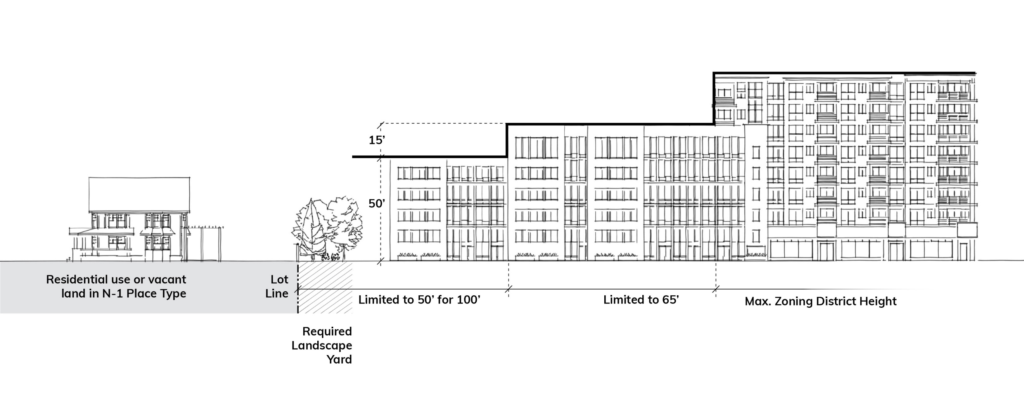
- Building Articulation
Building Articulation standards govern the dimensions of building facade elements and entry features and are intended to facilitate the enhancement of a pedestrian-oriented environment.
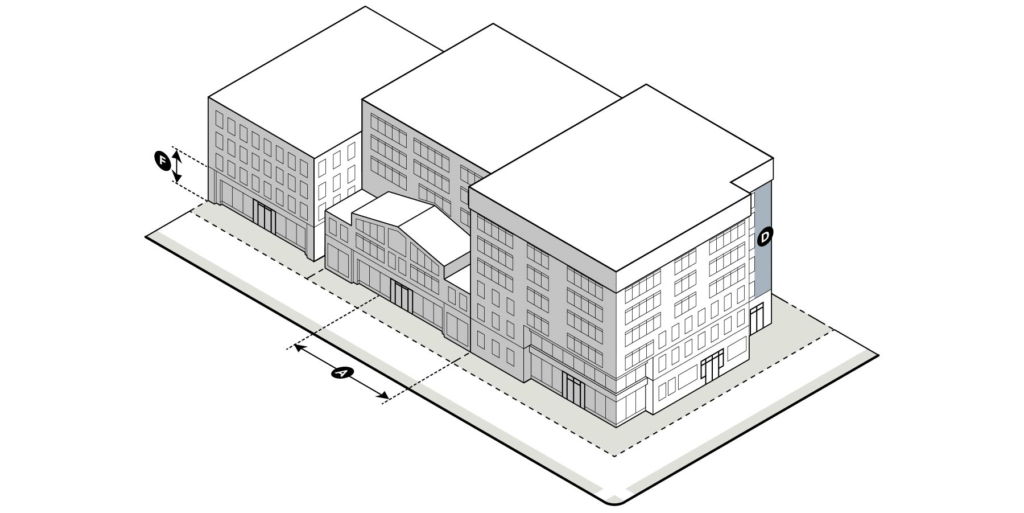
Table 7-4: Campus Zoning Districts Building Articulation Standards
| IC-1 | IC-2 | OFC | OG | RC | ||
| A | Minimum Building Length as a Percentage of Lot Width Along Frontage (Measured at Frontage Setback Line) (%)1, 9, 10 | |||||
| Main Street | 60 | 60 | 60 | 60 | 60 | |
| 4-5 Lane Avenue/Boulevard | 60 | 60 | ||||
| 6 or more Lane Avenue/Boulevard | 60 | 60 | ||||
| 2-3 Lane Avenue | 60 | 60 | ||||
| Transit Station, Off-Street Public Path, Public Park | 60 | 60 | ||||
| Other – Primary | 60 | 60 | ||||
| Secondary | 40 | 40 | ||||
| Parkway | ||||||
| Limited Access | ||||||
| B | Maximum Building Length Along a Frontage (feet) 2 | 600 | 500 | 600 | 500 | 500 |
| C | Maximum Building Length Along a Frontage with Additional Design Elements (feet) 2, 3 | 800 | 700 | 800 | 700 | 700 |
| D | Maximum Blank Wall Area – (Ground Floor and Upper Floor; Horizontal or Vertical; Per building) (feet) 4 | |||||
| Main Street | 20 | 20 | 20 | 20 | 20 | |
| 4-5 Lane Avenue/Boulevard | 20 | 20 | 20 | 20 | 20 | |
| 6 or more Lane Avenue/Boulevard | 20 | 20 | 20 | 20 | 20 | |
| 2-3 Lane Avenue | 20 | 20 | 20 | 20 | 20 | |
| Transit Station, Off-Street Public Path, Public Park | 20 | 20 | 20 | 20 | 20 | |
| Other – Primary | 20 | 20 | 20 | 20 | 20 | |
| Secondary | 40 | 20 | 40 | 20 | 20 | |
| Parkway | 60 | 50 | 60 | 50 | 50 | |
| Limited Access | 60 | 50 | 60 | 50 | 50 | |
| E | Minimum Ground Floor Height – Residential (Finished Floor Elevation to Finished Floor Elevation) (feet) 4, 5, 6, 7 | |||||
| Main Street | 16 8 | 16 8 | 16 8 | |||
| 4-5 Lane Avenue/Boulevard | 12 | 12 | ||||
| 6 or more Lane Avenue/Boulevard | 12 | 12 | ||||
| 2-3 Lane Avenue | 12 | 12 | ||||
| Transit Station, Off-Street Public Path, Public Park | 12 | 12 | ||||
| Other – Primary | 12 | 12 | ||||
| Secondary | 12 | 12 | ||||
| Parkway (when only frontage or adjacent to shared-use path) | 12 | 12 | ||||
| Limited Access | ||||||
| F | Minimum Ground Floor Height – Nonresidential and Mixed-Use (Finished Floor Elevation to Finished Floor Elevation) (feet) 5, 7, 8 | |||||
| Main Street | 16 | 16 | 16 | 16 | 16 | |
| 4-5 Lane Avenue/Boulevard | 16 | 16 | ||||
| 6 or more Lane Avenue/Boulevard | 16 | 16 | ||||
| 2-3 Lane Avenue | 16 | 16 | ||||
| Transit Station, Off-Street Public Path, Public Park | 16 | 16 | ||||
| Other – Primary | 16 | 16 | ||||
| Secondary | 16 | 16 | ||||
| Parkway (when only frontage or adjacent to shared-use path) | 16 | 16 | ||||
| Limited Access | ||||||
| G | Maximum Spacing for Required Prominent Entrances (feet) 4 | |||||
| Main Street | 250 | 250 | 250 | 250 | 250 | |
| 4-5 Lane Avenue/Boulevard | 250 | 250 | 250 | |||
| 6 or more Lane Avenue/Boulevard | 250 | 250 | 250 | |||
| 2-3 Lane Avenue | 250 | 250 | 250 | |||
| Transit Station, Off-Street Public Path, Public Park | 250 | 250 | 250 | |||
| Other – Primary | 250 | 250 | 250 | |||
| Secondary | 250 | 250 | 250 | |||
| Parkway (when only frontage or adjacent to shared-use path) | 250 | 250 | 250 | |||
| Limited Access | ||||||
1 Where a minimum building length as a percentage of lot width applies to multiple frontages, the highest frontage classification in the hierarchy (per Section 3.5.D) shall meet the established standard. In the case of a lot with two frontages, the second frontage shall only meet a standard of 40%. If there are more than two frontages subject to the standard, there is no minimum requirement for any frontage beyond the two highest frontages in the hierarchy. This requirement does not apply to Parkway or Limited Access frontages.
2 Maximum building length along a frontage does not apply to any frontage located along a Limited Access road. If any applicable minimum building length exceeds a maximum building length requirement, the maximum building length shall control.
3 To achieve maximum building length with additional design elements, the following is required:
- Where a building abuts two parallel frontages with pedestrian facilities, or one frontage with pedestrian facilities and a parking lot, public park or other publicly owned open space on the side of the building opposite the frontage, a pedestrian passage is required. Such passage shall meet the following criteria:
- General Requirements
- Passages shall be designed to accommodate pedestrians. Vehicular access and circulation shall not be allowed as a component of a passage.
- Passages shall be a minimum of 30 feet in width and 20 feet in height, and shall be located within the middle third of the building, measured along the frontage.
- Passages shall be designed to maintain views from one end through to the other.
- Inclusion of decorative elements such as lighting installations or public art within passages is encouraged.
- Passages shall align with the street grid or other points of access to sidewalks, public paths, parking lots, public parks, or other publicly owned open space where feasible.
- For the purposes of any build-to zone requirement, a building passage is considered part of the building façade that meets such requirement.
- Passages in nonresidential and mixed-use buildings.
- Ground floor uses shall be oriented toward the passage, including public entrances.
- Ground floor façades facing into building passages in nonresidential and mixed-use buildings shall maintain a minimum transparency of 35% of the wall area of the passage.
- Passages in residential buildings.
- Passages in residential buildings may be closed off to the public with gates and/or fencing but shall be of open design to allow for a clear view through the passage.
- Passages in residential buildings shall be designed with elements for use by residents, such as seating areas.
- Ground floor façades facing into building passages in residential buildings shall maintain a minimum transparency of 25% of the wall area of the passage.
- General Requirements
- Where a building does not abut two parallel frontages with pedestrian facilities, a break in the building massing is required as follows:
- Building mass shall be recessed a minimum of 20 feet in depth for no less than 30 linear feet along the façade. Such recess shall extend the full height of the building, and shall meet the following criteria:
- The recess shall be located within the middle third of the building, measured along the frontage.
- For nonresidential and mixed-use buildings, ground floor uses shall be oriented toward the recessed area, including public entrances.
- The recessed area is subject to all transparency requirements.
- The recessed area shall be designed as public or common space including amenities such as seating areas, landscaping, lighting, decorative elements, and public art.
- Building mass shall be recessed a minimum of 20 feet in depth for no less than 30 linear feet along the façade. Such recess shall extend the full height of the building, and shall meet the following criteria:
4 Does not apply to multi-family attached units when on sublots.
5 The ground floor of residential developments is still considered residential when leasing or management offices and/or tenant facilities, such as gyms and community/party rooms associated with the development are located on the ground floor.
6 Applies only if non-convertible residential; for convertible residential, nonresidential standard applies.
7 At least 70% of the total ground floor for nonresidential uses and 30% for residential uses, measured as a percentage of the interior space, shall meet the minimum ground floor height requirement.
8 Minimum ground floor height may be reduced by the Zoning Administrator if there are site constraints that would cause practical difficulty
9 On a site bounded by three or more street frontages, public open space that abuts a street frontage shall be counted as meeting building length for the purpose of calculating Minimum Building Length as a Percentage of Lot Width Along Frontage, subject to the following standards:
- This provision shall only be applied to a single street frontage.
- The abutting public open space shall comply with any applicable public open space standards of Table 16-2: Design of Open Space.
- The abutting public open space is no more than an average of 24 inches above or below grade of the adjacent sidewalk.
- The abutting public open space is a minimum of 50 feet in depth measured from the future right-of-way line.
- If no building abuts the public open space, or no building is located along the subject frontage, the established setback shall be determined as the terminus of any required build-to zone along the subject frontage.
10 Required landscape yards are excluded from the lot width dimension for the purposes of calculating Minimum Building Length as a Percentage of Lot Width Along Frontage
- Transparency
Transparency standards govern the required amount of ground floor and upper floor transparency and are intended to facilitate the enhancement of a pedestrian-oriented environment. These standards do not apply to multi-family attached development when units are on sublots.
Table 7-5: Campus Zoning Districts Transparency Standards
| IC-1 | IC-2 | OFC | OG | RC | ||
| A | Ground Floor Transparency – Residential (% of wall area between 3’ and 10’ from grade) 1, 2 | |||||
| Main Street | 25 | 25 | 25 | |||
| 4-5 Lane Avenue/Boulevard | 25 | 25 | 25 | |||
| 6 or more Lane Avenue/Boulevard | 25 | 25 | 25 | |||
| 2-3 Lane Avenue | 25 | 25 | 25 | |||
| Transit Station, Off-Street Public Path, Public Park | 25 | 25 | 25 | |||
| Other – Primary | 25 | 25 | 25 | |||
| Secondary | 25 | 25 | 25 | |||
| Parkway | 20 | 20 | 20 | |||
| Limited Access | ||||||
| B | Ground Floor Transparency – Nonresidential and Mixed-Use (% of wall area between 3’ and 10’ from grade; Per building) 1 | |||||
| Main Street | 50 | 50 | 50 | 50 | 50 | |
| 4-5 Lane Avenue/Boulevard | 40 | 40 | 40 | 40 | 40 | |
| 6 or more Lane Avenue/Boulevard | 40 | 40 | 40 | 40 | 40 | |
| 2-3 Lane Avenue | 40 | 40 | 40 | 40 | 40 | |
| Transit Station, Off-Street Public Path, Public Park | 40 | 40 | 40 | 40 | 40 | |
| Other – Primary | 40 | 40 | 40 | 40 | 40 | |
| Secondary | 40 | 40 | 40 | 40 | 40 | |
| Parkway | 30 | 30 | 30 | 30 | 30 | |
| Limited Access | ||||||
| C | Upper Floor Transparency – Residential, Nonresidential, and Mixed-Use (% of Wall Area per Story; Per building) | |||||
| Main Street | 15 | 15 | 15 | 15 | 15 | |
| 4-5 Lane Avenue/Boulevard | 15 | 15 | 15 | 15 | 15 | |
| 6 or more Lane Avenue/Boulevard | 15 | 15 | 15 | 15 | 15 | |
| 2-3 Lane Avenue | 15 | 15 | 15 | 15 | 15 | |
| Transit Station, Off-Street Public Path, Public Park | 15 | 15 | 15 | 15 | 15 | |
| Other – Primary | 15 | 15 | 15 | 15 | 15 | |
| Secondary | 15 | 15 | 15 | 15 | 15 | |
| Parkway | 15 | 15 | 15 | 15 | 15 | |
| Limited Access | ||||||
2 Applies only if non-convertible residential; for convertible residential, nonresidential standard applies.
- Site Layout Standards
The standards below establish site layout requirements for nonresidential, and mixed-use buildings, as well as multi-family attached and multi-family stacked buildings within the Campus Zoning Districts, either as standalone buildings or as components of multi-dwelling developments. These site layout requirements also apply to triplex and quadraplex buildings when these forms are components of a multi-dwelling development. Where standards below refer to a frontage, such standards apply to all frontages except parkways or limited access roads.
Table 7-6: Campus Zoning Districts Site Layout Standards
| Nonres. + Mixed-Use | Multi-Family Attached When Units Not on Sublots | Multi-Family Stacked | Multi-Family Attached When Units on Sublots | Triplex & Quadraplex Buildings in MDDs | |
| The primary pedestrian entry to each principal structure abutting a frontage shall face the frontage. On corner lots, the primary pedestrian entry may be oriented to either frontage. If a principal structure abuts both a frontage and common open space perpendicular to the frontage, the primary pedestrian entry may face the common open space1 if it meets the following: 1. The common open space has a minimum width of 50′ for the length of the common open space provided. 2. The common open space has a maximum length of 500′. Principal structures not abutting a frontage do not have to orient primary pedestrian entries to a frontage or common open space. | ✔ | ✔ | ✔ | ||
| Principal structures abutting a frontage shall be oriented with all building sidewalls perpendicular to the frontage. On corner lots, sidewalls may be oriented perpendicularly to either frontage. If a principal structure abuts both a frontage and common open space, the sidewalls may orient perpendicularly to the common open space1 if it meets the following: 1. The common open space has a minimum width of 50′ for the length of the common open space provided. 2. The common open space has a maximum length of 500′. Principal structures not abutting a frontage do not have to orient sidewalls perpendicularly to a frontage or common open space. | ✔ | ✔ |
- Building Design Standards
- Nonresidential and Mixed-Use Building Design Standards
The following design standards apply to nonresidential and mixed-use buildings in the Campus Zoning Districts.
- Nonresidential and Mixed-Use Building Design Standards
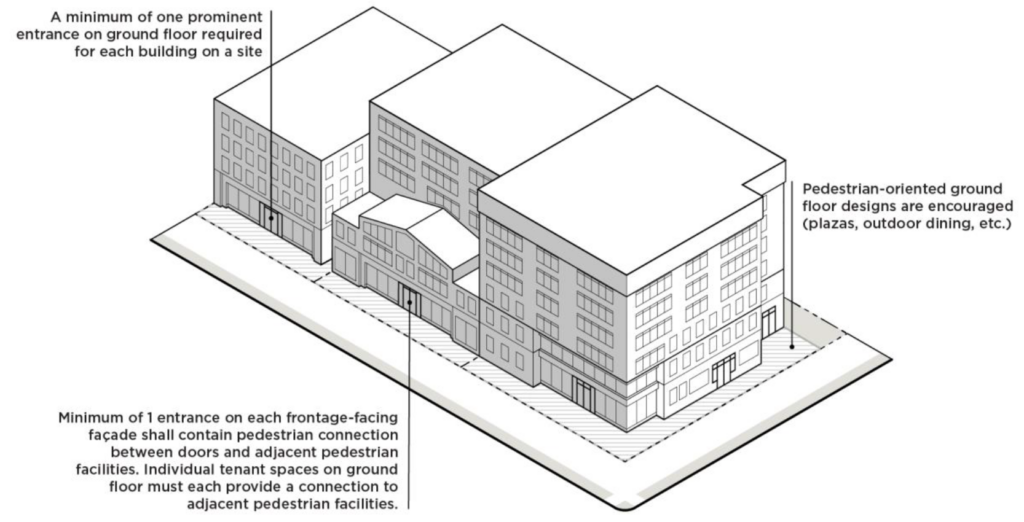
Table 7-7: Campus Zoning Districts Nonresidential and Mixed-Use Building Design Standards
| IC-1 | IC-2 | OFC | OG | RC | |
| Building Base and Entrance Design | |||||
For buildings over 90’ in height, the base of the building shall be clearly differentiated from the remainder of the building with an emphasis on providing design elements that will enhance the pedestrian environment.
| |||||
| Main Street | ✔ | ✔ | |||
| 4-5 Lane Avenue/Boulevard | ✔ | ✔ | |||
| 6 or more Lane Avenue/Boulevard | ✔ | ✔ | |||
| 2-3 Lane Avenue | ✔ | ✔ | |||
| Transit Station, Off-Street Public Path, Public Park | ✔ | ✔ | |||
| Other – Primary | ✔ | ✔ | |||
| Secondary | ✔ | ✔ | |||
| Parkway (when only frontage or adjacent to shared-use path) | ✔ | ✔ | |||
| Limited Access | |||||
| A frontage shall have a minimum of one prominent entrance, as defined in this Ordinance. The number of prominent entrances required shall be determined by the building length along the frontage and the maximum spacing in G of Table 7-4. In the case of a building located on a corner lot with two frontages, one prominent entrance located on the corner may count as a required prominent entrance for both frontages, subject to the following:
| |||||
| Main Street | ✔ | ✔ | ✔ | ✔ | ✔ |
| 4-5 Lane Avenue/Boulevard | ✔ | ✔ | ✔ | ||
| 6 or more Lane Avenue/Boulevard | ✔ | ✔ | ✔ | ||
| 2-3 Lane Avenue | ✔ | ✔ | ✔ | ||
| Transit Station, Off-Street Public Path, Public Park | ✔ | ✔ | ✔ | ||
| Other – Primary | ✔ | ✔ | ✔ | ||
| Secondary | ✔ | ✔ | ✔ | ||
| Parkway (when only frontage or adjacent to shared-use path) | ✔ | ✔ | ✔ | ||
| Limited Access | |||||
| A minimum of one ground floor entrance along each frontage facing façade, except for a Limited Access frontage, shall include a pedestrian connection between doors and adjacent pedestrian facilities, where such facilities are present or are required by this Ordinance. 1 | |||||
| Main Street | ✔ | ✔ | ✔ | ✔ | ✔ |
| 4-5 Lane Avenue/Boulevard | ✔ | ✔ | ✔ | ✔ | ✔ |
| 6 or more Lane Avenue/Boulevard | ✔ | ✔ | ✔ | ✔ | ✔ |
| 2-3 Lane Avenue | ✔ | ✔ | ✔ | ✔ | ✔ |
| Transit Station, Off-Street Public Path, Public Park | ✔ | ✔ | ✔ | ✔ | ✔ |
| Other – Primary | ✔ | ✔ | ✔ | ✔ | ✔ |
| Secondary | ✔ | ✔ | ✔ | ✔ | ✔ |
| Parkway (when only frontage or adjacent to shared-use path) | ✔ | ✔ | ✔ | ✔ | ✔ |
| Limited Access | |||||
| Where a building contains multiple tenant spaces on the ground floor abutting a frontage, each tenant space shall have a prominent entrance including a pedestrian connection between doors and adjacent pedestrian facilities, where such facilities are present or are required by this Ordinance. 1 | |||||
| Main Street | ✔ | ✔ | ✔ | ✔ | ✔ |
| 4-5 Lane Avenue/Boulevard | ✔ | ✔ | ✔ | ✔ | ✔ |
| 6 or more Lane Avenue/Boulevard | ✔ | ✔ | ✔ | ✔ | ✔ |
| 2-3 Lane Avenue | ✔ | ✔ | ✔ | ✔ | ✔ |
| Transit Station, Off-Street Public Path, Public Park | ✔ | ✔ | ✔ | ✔ | ✔ |
| Other – Primary | ✔ | ✔ | ✔ | ✔ | ✔ |
| Secondary | ✔ | ✔ | ✔ | ✔ | ✔ |
| Parkway (when only frontage or adjacent to shared-use path) | ✔ | ✔ | ✔ | ✔ | ✔ |
| Limited Access | |||||
| A minimum of one prominent entrance on the ground floor is required per building on a site.2 | ✔ | ✔ | ✔ | ✔ | ✔ |
| Pedestrian-oriented ground-floor designs are encouraged, including arcades, galleries, colonnades, outdoor dining areas, and outdoor plazas. When integrated into the overall building design, such features are considered to meet any required build-to percentage. | |||||
| Main Street | ✔ | ✔ | ✔ | ✔ | ✔ |
| 4-5 Lane Avenue/Boulevard | ✔ | ✔ | ✔ | ✔ | ✔ |
| 6 or more Lane Avenue/Boulevard | ✔ | ✔ | ✔ | ✔ | ✔ |
| 2-3 Lane Avenue | ✔ | ✔ | ✔ | ✔ | ✔ |
| Transit Station, Off-Street Public Path, Public Park | ✔ | ✔ | ✔ | ✔ | ✔ |
| Other – Primary | ✔ | ✔ | ✔ | ✔ | ✔ |
| Secondary | ✔ | ✔ | ✔ | ✔ | ✔ |
| Parkway (when only frontage or adjacent to shared-use path) | ✔ | ✔ | ✔ | ✔ | ✔ |
| Limited Access | |||||
2 This standard does not apply to a Continuum Care Retirement Community.
-
- Residential Building Design Standards
The following design standards apply to multi-family attached when units are not on sublots and multi-family stacked development in the Campus Zoning Districts.
- Residential Building Design Standards
Table 7-8: Campus Zoning Districts Residential Building Design Standards
| Multi-Family Attached When Units Not on Sublots | Multi-Family Stacked | |
| Facade Modulation | ||
Structures shall incorporate elements of variation on any façade facing a frontage, public open space, or common open space. Variation shall be achieved as follows:
| ||
| Main Street | ✔ | ✔ |
| 4-5 Lane Avenue/Boulevard | ✔ | ✔ |
| 6 or more Lane Avenue/Boulevard | ✔ | ✔ |
| 2-3 Lane Avenue | ✔ | ✔ |
| Transit Station, Off-Street Public Path, Public Park | ✔ | ✔ |
| Other – Primary | ✔ | ✔ |
| Secondary | ✔ | ✔ |
| Parkway (when only frontage or adjacent to shared-use path) | ✔ | ✔ |
| Limited Access | ||
| Building Base and Entrance Design | ||
| A frontage shall have a minimum of one prominent entrance, as defined in this Ordinance. The number of prominent entrances required shall be determined by the building length along the frontage and the maximum spacing in G of Table 7-4. In the case of a building located on a corner lot with two frontages, one prominent entrance located on the corner may count as a required prominent entrance for both frontages, subject to the following:
| ✔ | ✔ |
| The primary pedestrian entry shall be a prominent entrance along a frontage, as defined by this Ordinance, except for a Limited Access frontage, or along a common open space as per Table 7-6 above . In the case of a building with individual units with multiple exterior entrances, at least one of the entrances for each individual unit shall be a prominent entrance and that entrance shall be located on the highest frontage classification as per the hierarchy in Section 3.5.D. | ||
| Main Street | ✔ | ✔ |
| 4-5 Lane Avenue/Boulevard | ✔ | ✔ |
| 6 or more Lane Avenue/Boulevard | ✔ | ✔ |
| 2-3 Lane Avenue | ✔ | ✔ |
| Transit Station, Off-Street Public Path, Public Park | ✔ | ✔ |
| Other – Primary | ✔ | ✔ |
| Secondary | ✔ | ✔ |
| Parkway (when only frontage or adjacent to shared-use path) | ✔ | ✔ |
| Limited Access | ||
| All ground floor entrances to individual units on a frontage with a sidewalk shall be between 1’ and 5’ above the grade of the adjacent sidewalk when located within 10’ of the back of sidewalk. Residential units located below the grade of the adjacent sidewalk are permitted to have below-grade entrances, which shall be between 1’ and 3’ below the grade of the adjacent sidewalk. 1 | ||
| Main Street | ✔ | ✔ |
| 4-5 Lane Avenue/Boulevard | ✔ | ✔ |
| 6 or more Lane Avenue/Boulevard | ✔ | ✔ |
| 2-3 Lane Avenue | ✔ | ✔ |
| Transit Station, Off-Street Public Path, Public Park | ✔ | ✔ |
| Other – Primary | ✔ | ✔ |
| Secondary | ✔ | ✔ |
| Parkway (when only frontage or adjacent to shared-use path) | ✔ | ✔ |
| Limited Access | ||
| Arcades, galleries, colonnades, outdoor plazas, outdoor dining areas, or similar pedestrian-oriented ground floor designs may be incorporated into facades. When provided, such features that are in line with the building facade above the ground floor are considered to meet any required build-to percentage. | ||
| Main Street | ✔ | |
| 4-5 Lane Avenue/Boulevard | ✔ | |
| 6 or more Lane Avenue/Boulevard | ✔ | |
| 2-3 Lane Avenue | ✔ | |
| Transit Station, Off-Street Public Path, Public Park | ✔ | |
| Other – Primary | ✔ | |
| Secondary | ✔ | |
| Parkway (when only frontage or adjacent to shared-use path) | ✔ | |
| Limited Access | ||
- Building Materials
The following building materials are limited to 25% of each façade along a frontage. They may also be used as a component of construction when not a surface finish material without limitation. These restrictions do not apply to multi-family attached dwellings when units on sublots or to accessory buildings less than 1,000 square feet or greater than 250’ from a street, platted right-of-way, or public open space establishing the frontage, as defined by Article 2 of this Ordinance.- Corrugated metal siding, either galvanized or with a painted finish. An alternative metal siding may exceed the limit outlined above if the metal siding is deemed a more decorative surface finish material as approved by the Zoning Administrator.
- The reuse of pre-fabricated shipping containers is permitted and is not subject to this limitation, subject to compliance with the building code and other applicable codes.
- Exterior insulation finishing systems (EIFS) is prohibited on the ground floor of a multi-family dwelling (the 25% permission above does not apply). This does not apply to multi-family attached dwellings when units on sublots.
- Plain concrete masonry units (CMU) having no integral color pigment or improved exterior surface finish. For this standard the application of paint does not qualify as an improved exterior surface finish.
- Plastic
- T-111 composite plywood siding
- Vinyl
- Corrugated metal siding, either galvanized or with a painted finish. An alternative metal siding may exceed the limit outlined above if the metal siding is deemed a more decorative surface finish material as approved by the Zoning Administrator.
7.4 OPEN SPACE REQUIREMENTS
- New construction of a principal building of 1,000 square feet or greater and/or and expansion of a principal building by 5,000 square feet or 20% of the building area, whichever is less, is required to provide on-site open space, except for development on sites of one-half acre or less in size.
- The design of open space shall meet the design requirements of Section 16.5.
- Based on the site area, development shall provide on-site open space as follows:
Table 7-9: Minimum Required Open Space
| IC-1 | IC-2 | OFC | OG | RC | |
| Total On-Site Open Space | Development shall provide a minimum of 10% on-site open space. | ||||
| Public On-Site Open Space (% of Total On-Site Open Space) | |||||
| Commercial Development | A minimum of 50% of the on-site open space shall be public open space for commercial developments. | ||||
| Mixed-Use Development + Campuses 1, 2 | A minimum of 25% of the on-site open space shall be public open space for mixed-use development and campuses. | ||||
2 Does not apply to CCRC.
- Residential on-site open space may be provided as land dedicated to Mecklenburg County Park and Recreation, a fee-in-lieu provided to Mecklenburg County Park and Recreation, or a combination thereof in accordance with the requirements of Section 16.5.
- Nonresidential and mixed-use on-site open space may be provided as land dedicated to Mecklenburg County Park and Recreation, a fee-in-lieu provided to Mecklenburg County Park and Recreation, or a combination thereof in accordance with the requirements of Section 16.5.
- For projects with multiple phases, the open space required for each phase, per this Section, shall be installed prior to completion of that phase.
7.5 ON-SITE PEDESTRIAN CONNECTIVITY REQUIREMENTS
Standards for required on-site pedestrian connectivity are found in Section 16.6.
7.6 SUPPLEMENTAL DEVELOPMENT STANDARDS
- General Development Standards
General development standards are found in Article 16. - Accessory Structures
Standards for accessory structures are found in Article 17. - Architectural Features
Standards for architectural features are found in Article 18. - Off-Street Parking
Standards for off-street parking and bicycle parking are found in Article 19. - Landscaping and Screening
Landscaping and screening standards are found in Article 20. - Loading and Service
Standards for loading spaces and service areas are found in Article 21. - Signs
Standards for signs are found in Article 22. - Drainage
Standards for drainage are found in Article 24.
